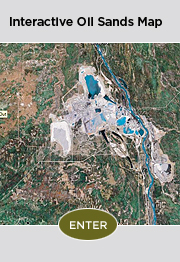Evolution of in-situ production
| In 1974, the Alberta government created a Crown corporation to work with researchers and industry to develop new oil sands technologies. This corporation, known as the Alberta Oil Sands Technology and Research Authority (AOSTRA)*, set out to examine areas of the Athabasca oil sands that were too deep (generally held to be over 70 meters in depth) to be mined.
*Note: AOSTRA changed hands several times throughout the next 26 years. In 1986 it was taken over by the Alberta Department of Energy and then in August 2000, its programs were consolidated by the Alberta Energy Research Institute (AERI). |
|
| In 1978, Dr. Roger Butler (Ph.D., Chemical Engineering) from the Imperial College of Science and Technology, introduced the concept of Steam Assisted Gravity Drainage (SAGD). AOSTRA, industry and government supported SAGD as a promising innovation.
In 1984, AOSTRA developed an Underground Test Facility (UTF) to test SAGD technology. The site, located approximately 60 kilometres northwest of Fort McMurray, was owned and operated by 10 industry partners and received government funding. It was here that the SAGD process was confirmed to be commercially viable. |
|
The UTF operation was conducted in three phases:
| |




















